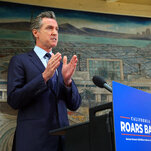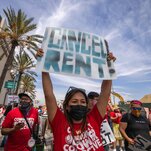
New Covid-19 Unemployment Benefits to Keep Stimulus Flowing Through Summer
Enhanced unemployment benefits included in the $1.9 trillion pandemic-relief package signed on Thursday by President Biden could keep billions of dollars a week in stimulus flowing into the economy through the summer.
The plan extends two pandemic-related programs and lengthens supplemental $300 payments to all laid-off workers receiving unemployment benefits through early September—well after the effect of $1,400 checks to individuals likely fades. About 20 million people tapped unemployment benefits in mid-February, up from 2 million a year earlier, adding up to more than $10 billion in additional stimulus a week.
Some economists say extending extra jobless benefits for nearly 18 months is a disincentive for some people to return to work, preventing industries such as logistics, construction and certain retailers from finding employees as the economy recovers.
Other economists say the payments have provided a boost to many lower-income families, who have disproportionately lost jobs in the coronavirus pandemic, while in turn pushing money back into the broader economy. The U.S. had 9.5 million fewer jobs in February than a year earlier, according to the Labor Department.
“Things are improving, but we still have a massive jobs hole,” said
Heidi Shierholz,
a Ph.D. economist at the Economic Policy Institute who served in the Obama administration. “Unemployment benefits will help get some people through what could still be some very rough next few months,” she said.
The law allows unemployed workers, including the self-employed and others not typically eligible for any benefits, to tap jobless assistance until Sept. 6. With the $300 weekly enhancement, the average weekly unemployment benefit for those qualifying through regular state programs is about $620 a week, according to the Labor Department, roughly the equivalent of working full-time at $15.50 an hour.
A person receiving the average level of benefits since last March would have been paid about $30,000 in the course of the past year. The extension could allow that individual to receive about $15,000 more.
Economists expect economic stimulus and an easing pandemic to boost economic growth to near 6%, which would be the fastest pace in nearly 40 years. However, extra government spending in the past year has been causing federal deficits to soar and risks stoking inflation.
At the end of January, there were 6.9 million unfilled jobs in the U.S., the Labor Department said Thursday, slightly less than a year earlier, just before the pandemic took hold. But there are more available jobs in some fields.
Job search site Indeed.com said there were nearly 40% more openings in manufacturing and warehouse-type jobs in late February, compared with a year earlier. Pharmacy and construction openings were up more than 30%.
Extended benefits create an impediment to hiring for employers in those industries, said Marianne Wanamaker, a Ph.D. labor economist at the University of Tennessee who served in the Trump administration.
“By giving people an easy out, you’re sandbagging their ability to get back into the labor force,” she said. “And we know the longer people don’t work, the more they struggle to get back.”
Those out of work for a year or more can see skills atrophy and face a stigma around a long gap of unemployment on their resumes. They also make life adjustments, such as moving in with family members, that can lead them to dropping out of the labor force, Dr. Wanamaker said. “A mismatch between the supply of labor and demand is a recipe for higher inflation and slower economic growth,” she said.
Recent Labor Department guidance makes it possible for some workers to decline job offers and stay on benefits, if they believe the workplace to be unsafe. Typically, laid-off workers must be actively searching for a job to receive unemployment benefits. Some people haven’t restarted job searches because their children’s schools aren’t fully reopened or they are concerned about getting sick.
Dr. Shierholz said most people would opt for a permanent job rather than stay on temporary jobless benefits slated to end by September. “And if people take a little longer to find a job, that can be a good thing for them and the economy,” she said. “They can find a job that matches their skills and interest, where they can be more productive and likely paid more.”
Some employers say the $300 enhancement provided this year is more manageable than the extra $600 in weekly payments included in the initial government relief package passed by Congress and signed by former President
Donald Trump
last year. Those payments ended in July 2020.
A handful of workers at Hoffman Car Wash locations in Albany, N.Y., asked to not be recalled last spring because their unemployment benefits paid more than they earned cleaning cars, said owner Tom Hoffman Jr. But he said that the $300 enhancement hasn’t caused the same issue, and that he recently has been able to find the workers he needs.
He said his business remains down from 2019, because people drive less and some customers are reluctant to have their vehicle interiors cleaned, the most labor-intensive service.
“I think the $300 is helpful to people who are out of work,” he said. “It doesn’t provide nearly the disincentive as the $600 we saw last year.”
Write to Eric Morath at [email protected]
Copyright ©2020 Dow Jones & Company, Inc. All Rights Reserved. 87990cbe856818d5eddac44c7b1cdeb8


















